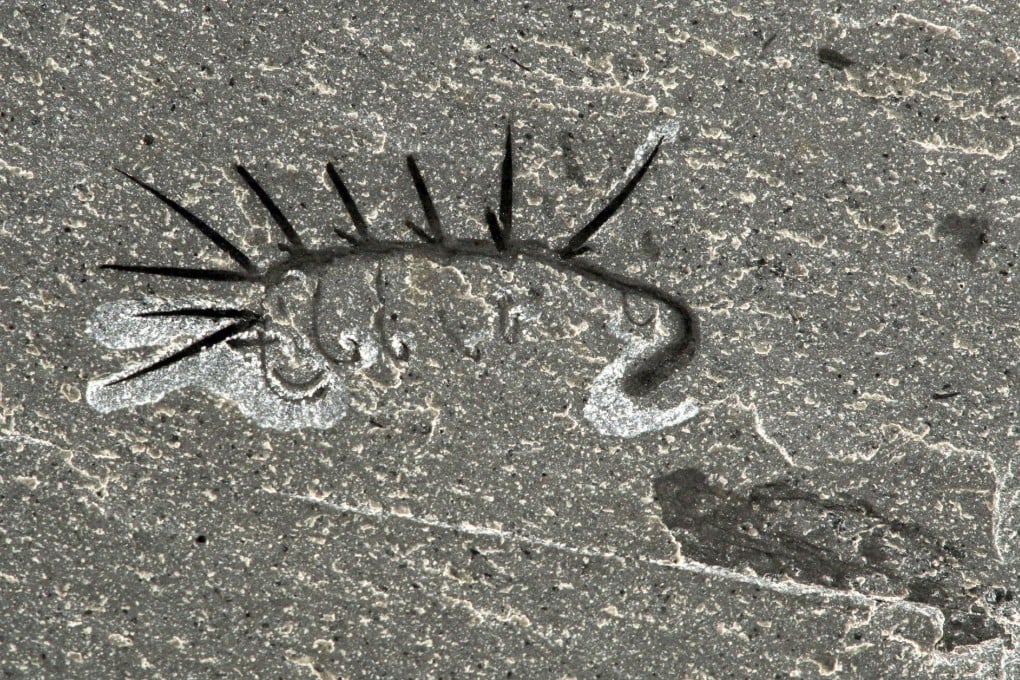Scientists discover eyes and teeth in prehistoric worm after realising they'd been looking at wrong end

For decades, scientists have been trying to piece together the anatomy of a tiny prehistoric worm so weird-looking that they named it .
The stiff spikes on the long-extinct critter's back were long thought to be legs, while seven pairs of spindly limbs were mistaken for tentacles.
On Wednesday a research duo said the creature had not only been reconstructed upside down, but also back to front - they found a pair of eyes and a toothy mouth in what was long thought to be its backside.
"Prior to our study, a large balloon-like orb at one end of the specimen had been interpreted as an amorphous head," said Martin Smith of the University of Cambridge, who co-authored a study published in the journal .
"We can now demonstrate that this actually wasn't part of the body at all but a dark stain representing decay fluids or gut contents that oozed out of the anus," he said.
Smith and colleague Jean-Bernard Caron of the University of Toronto, used an electron microscope to analyse dozens of fossils in museum collections, and uncovered "astounding new detail" of the worm that lived on the sea floor some 505 to 515 million years ago.